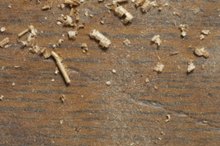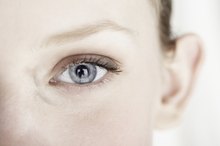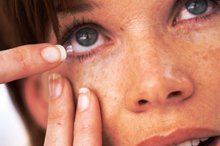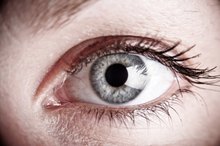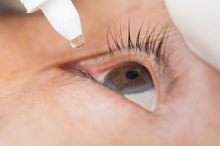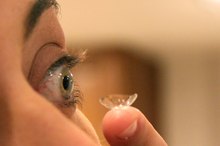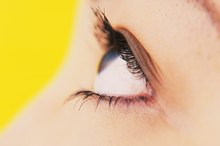What does fact checked mean?
At Healthfully, we strive to deliver objective content that is accurate and up-to-date. Our team periodically reviews articles in order to ensure content quality. The sources cited below consist of evidence from peer-reviewed journals, prominent medical organizations, academic associations, and government data.
The information contained on this site is for informational purposes only, and should not be used as a substitute for the advice of a professional health care provider. Please check with the appropriate physician regarding health questions and concerns. Although we strive to deliver accurate and up-to-date information, no guarantee to that effect is made.
How to Wash Out the Eye
Eyes are sensitive organs that are easily irritated. Any small particle in your eye can cause extreme distress. Natural tearing may flush a small bit out of your eye, but you may have to intercede in other cases. The offending matter can often be removed at home. Prepare a simple eye wash station in your home so you will have it when you need it. Be aware that in some cases, the cornea, the transparent covering over the iris and pupil, can be scratched. Seek medical attention if pain continues following removal of the object.
If you are experiencing serious medical symptoms, seek emergency treatment immediately.
Wash your hands thoroughly with warm water and antibacterial soap prior to touching your eye.
How to Remove Sawdust From Your Eye
Learn More
Find a well-lit place with a mirror, such as the bathroom, where you can safely remove the particle.
Inspect your eye visually to determine the nature and position of the eye irritant. Common particles that get in the eye include sand, eyelashes, and salt and pepper flakes.
How to Cleanse Your Eye of Concrete Dust
Learn More
Fill an eyedropper or medicine cup with cool clean water.
Hold your upper lid up and away from your eye with your left hand.
Hold the dropper or cup in your right hand, and flush your affected eye.
Repeat flushing until you have removed the particle or have determined that this method alone will not work.
Pull your upper lid up and over your lower lid and roll your eyes to help remove the particle if flushing fails, recommends the University of Iowa Hospital and Clinics 1.
Get someone to drive you to an emergency room if you cannot dislodge a particle or if your eye still hurts after removal. You may have scratched the cornea, the transparent covering of the pupil and iris.
Tips
Always wear safety glasses when working in a laboratory, doing yard work, drilling or performing any activity in which small particles may fly.
Remove floating particles by dabbing the eye with a wet piece of cotton or clean white cloth while holding your lids open.
Blink several times to get the tears flowing. Sometimes you can easily flush the irritant out simply by crying.
Warnings
Never try to remove an irritant that is embedded in the eye.
Never put anything, aside from water, into your eye.
Do not remove your contact lenses if the irritant is chemical in nature, warns Medline Plus. Instead, rinse your eyes with the lenses in place, and then seek medical attention.
Related Articles
References
Tips
- Always wear safety glasses when working in a laboratory, doing yard work, drilling or performing any activity in which small particles may fly.
- Remove floating particles by dabbing the eye with a wet piece of cotton or clean white cloth while holding your lids open.
- Blink several times to get the tears flowing. Sometimes you can easily flush the irritant out simply by crying.
Warnings
- Never try to remove an irritant that is embedded in the eye.
- Never put anything, aside from water, into your eye.
- Do not remove your contact lenses if the irritant is chemical in nature, warns Medline Plus. Instead, rinse your eyes with the lenses in place, and then seek medical attention.
Writer Bio
Lisa Mooney has been a professional writer for more than 18 years. She has worked with various clients including many Fortune 500 companies such as Pinkerton Inc. She has written for many publications including Woman's World, Boy's Life and Dark Horizons. Mooney holds bachelor's degrees in both English and biology from the University of North Carolina at Charlotte.
